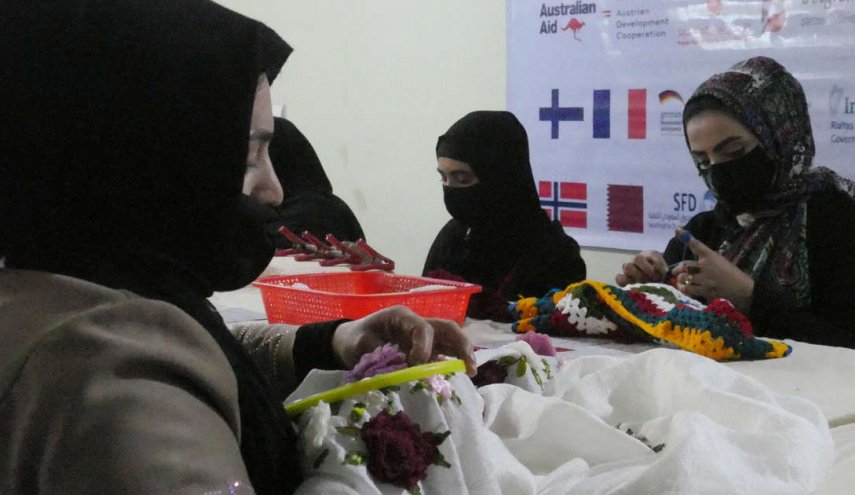 By: Aref Wafaei
By: Aref Wafaei
Translated by: Mohammad Sakhi Rezaie
As another step to further isolate women, Ministry of economy issued an edict on December, 24, 2022, banning women to work in local and international NGOs. The edict reads, “Until the second instance, all local and international NGOs must suspend women employees.” It added that “If any organization dose not abide by the rule, their work permit issued by the ministry will be cancelled.”
After seizing power in August, Taliban suspended parts of women rights including the right to education and socio-political rights. Suspending women work will further the exclusion of women and make them more vulnerable.
More than 120,000 people have been killed from 2001 to 2021 in the war between Taliban and the republican system. Further, about 110,037 people were disabled in the war, suicide bombings, and road side bombings, which the Taliban group are blamed for most of them.
According to the reports of the ministry of economy, in a survey 2020 titled income, consumption and work force, conducted by the ministry showed that about 1.6 of the families had a female head. In other words 70,468 families have women head. Another survey conducted by the ministry of economy titled “Survey of life conditions in Afghanistan, 2016” about 569,324 have lost their husbands. In other words about 3.99 percent of Afghan women had lost their husbands or have not married after they divorced. In addition to this, according to the statistics of the Independent Authority of Martyrs and people with Disabilities conducted in 2016, there is about 155,000 families of martyrs in Afghanistan and women are the head of these families.
Women who are the head of families work in public offices or local and international NGOs. Based on this, the former government has allocated certain incentives for women employment in public offices. Based on such incentives, many women were employed in public offices by IARCSC. According to the reports of the ministry of economy in 2020, women constituted about 16.5 percent of the total work force of the country in the public and private originations.
The former government established a specific cooperation mechanism with female family head and provided specific supports for them through Ministry of women, independent Human Rights Commission, Ministry of Martyrs and People with Disabilities and Afghanistan Natural Disaster Management Authority. These institutions provided social protection to the families and especially to the families headed by women. After Taliban seized the power for the second time in Afghanistan, their leadership banned these institutions as their first step for marginalizing women. After these agencies were eliminated, many women lost their jobs. However, Taliban has continually excluded women and they recently banned women work to public offices, national and international NGOs.
In a situation that the government social protection systems have collapsed and the prices of the basic needs and food has increased, banning women head families to work in local and international NGOs will add up to their problems. Government agencies including Ministry of Martyrs and Disabled, have cut off providing service to the former government security forces (martyrs and Disabled families) as an oppressive policy. All such measures have further made vulnerable the poor families, especially female headed families and they face food insecurity and poverty in the country.
At the same time, A new UN women report show after Taliban suspended women to work 94 percent of the organization led by women have stopped their activities. The report added that after Taliban banned women work on December 24, 2022, humanitarian and economic crises increased in the country. According to the report, “11.6 million women and girls will need aid in 20223 and 97 percent of the Afghanistan population are under poverty line.”
Jade Abresham Weekly examined consequences of women ban to work on female headed families on whatsApp and Facebook in January 2023. A questionnaire was distributed among 13 female headed families. Women from Kabul, Ghor, Sar e Pul, Jawzjan, Maidan Wardak and Ghazni provinces participated in the assessment without mentioning their names. Most of these women had lost their husbands due to war, illness, divorce, and addiction and traffic accidents. 15 percent of these women said their husbands were killed during the war by Taliban.
Most of the women reported banning women to work has negative impacts on them. One of the women said, by banning women to work in local and international NGOs, her family income has reached to Zero. Another women said, “Women have no income and I do not know how to afford my family.” One of the other women stated, “I worked then and I am unemployed now. I face a lot of problems. I work at homes of the people as a servant.” Condemning Taliban decision, these women said their fate is uncertain now. Another women said, “My mother worked in an NGO. We lost our income by Taliban edict. Our future is uncertain now.” “Our brothers quitted school to work and afford the family. If not so, we should have begged for a piece of bread or work as a sex worker.” And one of the other respondents said “I and my sister lost our jobs and we are too worried now.”
Female respondents to JAW questionnaire complained of poverty, inability to pay their rents, affording their meals and paying their daily expenses as the most economic problems they have faced after the Taliban ban women to work. “I face mounting problems. I did my best to educate my children, but five of them have been deprived of education and all my efforts have been wasted.” One of the respondents said. Another participant said she does hard work to afford her family. But living in a rental house, makes life harder for them day by day.
25 percent of the respondent make a living by working in NGOs, 16.67 were self employed, and 25 percent did hard work and worked as servants, 16.6 made a living by working as a beggar. Most of the families 34.46 percent between 3 to 5, 30.7 percent between 5 to 7, 23 percent between 7 to 10, and 7.69 percent have more than 10 members, most of them children and women.



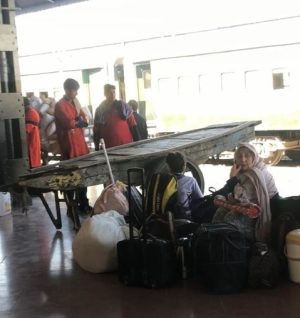
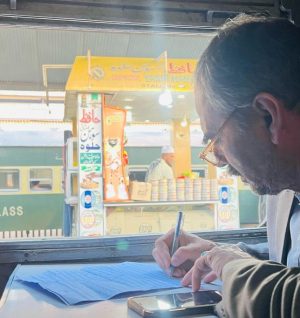
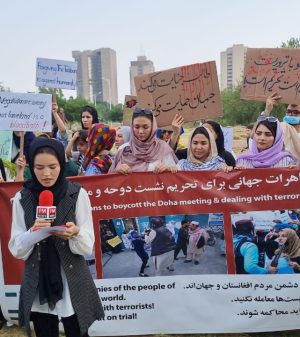
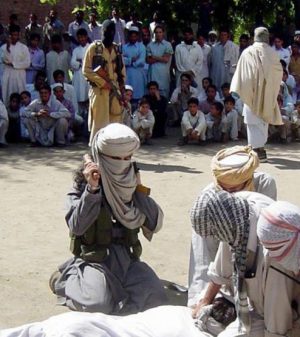
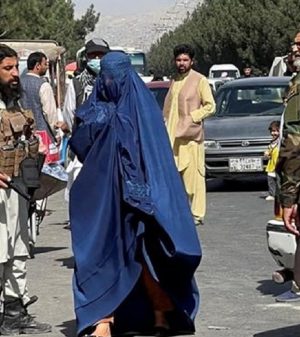


Add Comment